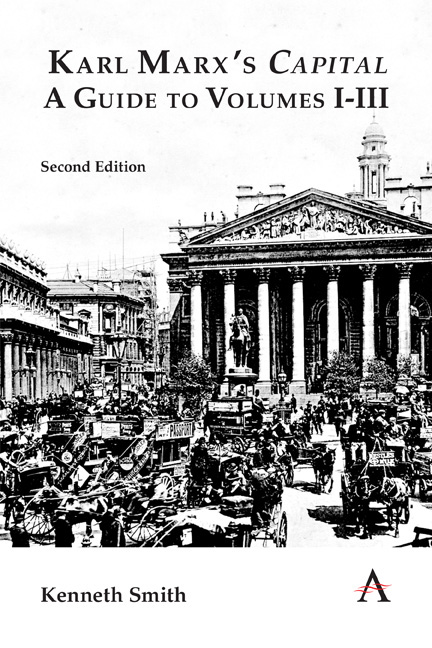Book contents
- Frontmatter
- Dedication
- Contents
- Preface to the Second Edition
- Introduction
- Part I The Development of the Capitalist Mode of Production
- Part II The Capitalist Mode of Production
- Part III The Underdevelopment of the Capitalist Mode of Production
- Part IV The Value Theory of Labour
- Conclusion to Part IV
- Conclusion
- Appendix: On Social Classes
- Notes
- Bibliography
- Index
1 - Absolute And Relative Surplus Value In Capital, Vol. I, Ch. 10 And 12
Published online by Cambridge University Press: 17 April 2021
- Frontmatter
- Dedication
- Contents
- Preface to the Second Edition
- Introduction
- Part I The Development of the Capitalist Mode of Production
- Part II The Capitalist Mode of Production
- Part III The Underdevelopment of the Capitalist Mode of Production
- Part IV The Value Theory of Labour
- Conclusion to Part IV
- Conclusion
- Appendix: On Social Classes
- Notes
- Bibliography
- Index
Summary
It is obviously possible to extend the length of the working day from 7 or 8 hours, to 10, 12, 14, 16 or even 18 hours, and this was done as a matter of course at the beginning of the Industrial Revolution in Britain, and is still done to a greater or lesser extent in other parts of the world today in the form of so-called ‘overtime’ and ‘over-working’. However, this process is not without its limits. Firstly, of course, there are only so many hours in the day; although on rare occasions a labourer might well be made to work for longer than 24 hours at one time, by definition the working day itself cannot be extended beyond 24 hours per day. Secondly, labourers must eat and rest in order to renew themselves and reproduce their capacity to labour, and it is not only in the interest of the labourers themselves that they should do this; it is also in the interests of the capitalists who employ them. A continuous supply of labour is just as essential to the capitalist mode of production as it is to any other and a labourer who has rested is likely to make fewer, less costly, mistakes than a labourer who is exhausted. Of course, although capital needs a continuous supply of labour generally speaking, where the supply of labour is plentiful, it is possible to work individual labourers to death and replace them with fresh labour in the form of entirely new labourers. This happened to some extent in the development of European capitalism (Urry 1981, 124); and the pattern of reproducing what Marx calls labour-power (as opposed to reproducing the labourers themselves) is characteristic of slave labour whenever the cost of such labour is sufficiently cheap.
When labour is scarce, however, labourers themselves become a valuable commodity. A slave becomes a valuable investment to a slave-owner when the slave costs more to buy than the value of the labour that can be extracted from the slave by working him or her to death.
- Type
- Chapter
- Information
- Karl Marx's 'Capital': A Guide to Volumes I-III , pp. 18 - 22Publisher: Anthem PressPrint publication year: 2021



